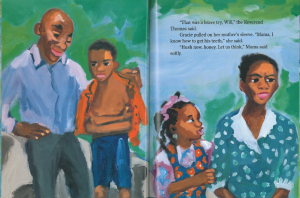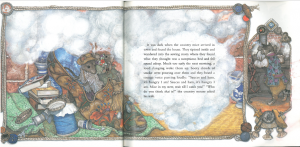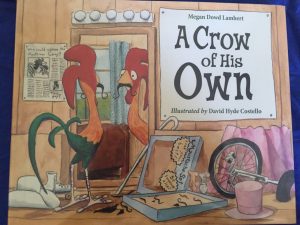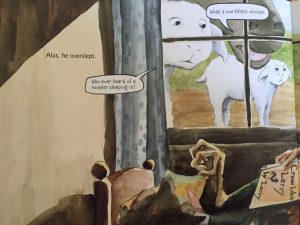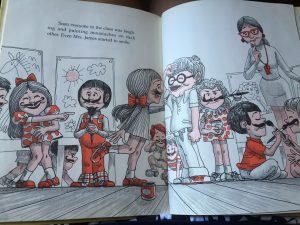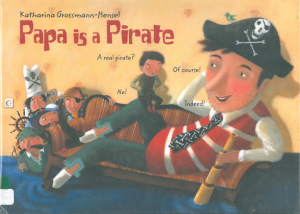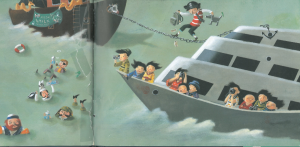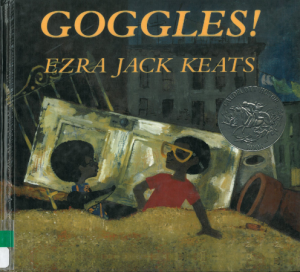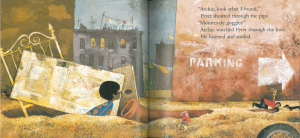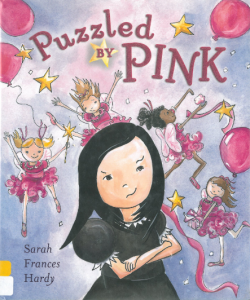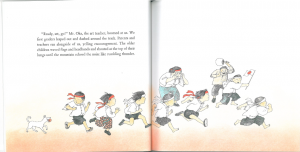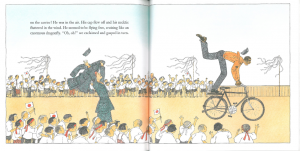Author: Pat Mora
Illustrator: Raul Colón
Publishing Information: Alfred A. Knopf, 2005
Number of Pages: 30
Genre: Fiction, Picture book

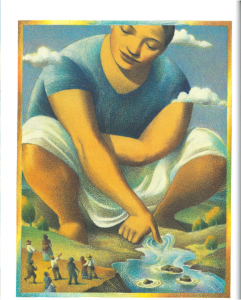
Analysis:
Doña Flor is a warm-hearted giant lady living in a village in the American Southwest. She can talk to all kinds of animals and make friends with them. One day, a terrifying noise scares all villagers. Doña Flor goes on an adventure. With the help of her animal friends, she finds out that the origin of the noise is a puma, which is relatively smaller than her. In the end, she makes friend with the little puma as well.
Besides the Golden Kite Award, this book also won a Pura Belpré Award for illustrations and a Pura Belpré Honor for narrative. The story demonstrates multiculturalism by depicting Doña Flor as a Latino lady. The text functions as a window for children to look at an imaginary world and at the same time shows children the beauty of human nature. She would “tuck her animal friends in and read them a good-night story” (p. 12). When the whole village is frightened by the noise, Flor is worried and thinks “what can I do to cheer my friends up” (p. 18).
I found the book problematic for the following reasons. First of all, in the story there are always some children laughing at Flor because she is giant. However, when they need Flor’s help, they would still say, “Por favor, Flor, could you give us a ride” (p. 3). And then Flor says nothing and “took just one of her giant steps and was at the school door” (p. 3). Children might interpret this plot in a wrong way and think that it is okay to be rude to other people because they are still going to help them in the future. Secondly, although it is nice to depict the main character different from normal people for teaching children to accept the differences among people, the giant figure of Flor suggests that human beings are more powerful than nature. Some texts also reveal this point. For example, “Flor knew that her village needed un rio, a river, so to make her neighbors happy, Doña Flor scratched a new riverbed with her thumb” (P. 18). Children should learn to respect nature instead of always trying to conquer nature.
Perceptually, the author uses a lot of descriptive sentences which makes the story more engaging. For instance, the first sentence of the book is “Every winter morning when the sun opened one eye, Doña Flor grabbed a handful of snow from the top of a nearby mountain” (P. 2). The pictures are not framed which give readers a view from within. The illustrator uses warm colors generally to depict the gentle atmosphere. Structurally, most of the text and images do not overlap. Ideologically, the book teaches children to be brave and not afraid of nature. Also, the nobility of Doña Flor tells children that it is nice to help others. Overall, it is an amazing and beautiful story.


